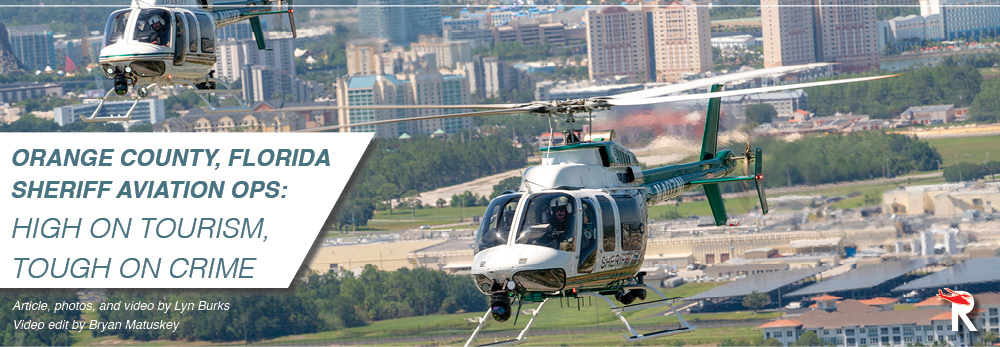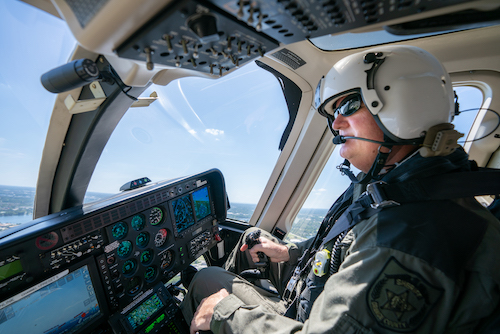|
Jul
10
2023
|
|
Posted 2 years 177 days ago ago by Admin
|
|

VIEW VIDEO
There are too many unique and interesting facts about Orange County, Florida, to list here, but let’s start with a few and see where it goes:
Did you know that Orange County’s land was part of the first land to come up from the sea millions of years ago, and it is known as Orange Island. Orange County's Rock Springs location is a Pleistocene fossil-bearing area and has yielded a variety of mammal remains, including giant sloth, mammoth, camel, and the dire wolf dating around 1.1 million years ago.
Also, the county was named Mosquito County by Andrew Jackson from 1821 up until Florida was made a U.S. State in 1845, at which point it was renamed Orange County. No doubt, that change helped tourism!
In 1955, Disneyland opened in Anaheim, California. Oddly enough, this new theme park on the West Coast of the U.S. would be the genesis of a population explosion on the other side of the country in the growing State of Florida . . . except that it almost didn’t happen. In an effort to replicate Disneyland in California, Walt Disney began what was called the “Florida Project” and began purchasing and developing land in the Orange County area in the 1960s. Unfortunately, Walt Disney died on 15 December 1966, during the initial planning of the complex.
After Walt’s death, his older brother, Roy O. Disney, came out of retirement to make sure Walt's biggest dream was realized. Magic Kingdom was the first theme park to open in the complex in 1971, followed by Epcot (1982), Disney's Hollywood Studios (1989), and Disney's Animal Kingdom (1998). It was loyal Roy who insisted the name of the entire complex be changed from Disney World to Walt Disney World.
In 1840, the county population was 73. In 1960, it was 263,000. Today, Orange County has a resident population of 1.4 million people and welcomes more than 75 million visitors annually, making it the No. 1 destination for tourism and travel in the entire world.

What does all this have to do with helicopters? Well, although very large and diverse populations can be culturally rich and interesting, they can also mean more crime. Fortunately for residents and tourists, the Orange County Sheriff’s Office (OCSO) has a long history of aviation-supported law enforcement. Granted, not as far back in history as its Pleistocene fossil era, but still a rich history nonetheless.
Early Adopter
OCSO has utilized aviation assets to support law enforcement activities for more than a half century with the organization’s first aircraft being an airplane used for patrol in the 1950s. It was not until the mid-70s that the growing unit began to fly helicopters. Like many other law enforcement agencies across the country, OCSO took advantage of U.S. military surplus helicopter programs that put Bell OH-58 turbine helicopters into service throughout the 1980s and ‘90s.
In 1997, OCSO made the decision to transition to certificated helicopters and purchased one of the first 407s produced by Bell Helicopter. Since then, they have purchased several B407s and to this day they operate three B407s and one B206L4. It’s worth noting that the unit still operates a fixed-winged aircraft in which it utilizes a Cessna 206 Stationaire for higher altitude, extended surveillance missions.
Supporting Partner
Because the OCSO has a service area of over 1,000 square miles and is dedicated to supporting law enforcement missions, it has many partnerships both in and out of the agency. Within the county, Corporal Scott Sampsel, who has been in the unit for more than two decades reflects, “We probably touch just about every single entity within the Sheriff’s Office, road patrol, the SWAT teams, Marine unit, undercover units, K-9, CID, SID, and then there are entities that you might not think of like the environmental agency and code enforcement.”

Sampsel went on to explain that not only does the unit provide support for the 12 municipalities within Orange County (to include the City of Orlando), but also to neighboring counties as well. Interestingly, every neighboring county that adjoins Orange County has airborne law enforcement assets as well, and they all support one another on an as-needed basis. Additionally, the unit routinely supports other state (i.e, Florida Highway Patrol, Florida Wildlife Commision) and federal law enforcement agencies when called upon.
Probably the most interesting and mutually exclusive partnership is the one between OCSO and the City of Orlando Police Department (OPD). With Orlando being a large city, they definitely have demand for aerial support. However, rather than have a stand-alone aviation unit within OPD, there’s a creative solution in place between OCSO and OPD in the form of a barter.
Basically, OCSO trades flight time for personnel. “Because a portion of our flight time goes to supporting OPD (approx 40%), they support us in return by providing OCSO two full-time and several part-time Orlando police officers who work here as tactical flight officers (TFOs) and fly in our aircraft every day,” says Sampsel.
Staffed, Trained, Equipped—and Busy
As the county population has grown and the call volume has increased over the years, so has the number of personnel and aircraft required to meet demand. Currently it takes a team of 30 personnel to keep the aviation unit operational. That includes approximately 26 pilots and tactical flight officers (both full-time and part-time) and four full-time aircraft mechanics. In a 24-hour day, there will be a couple of eight-person squads on shift providing aerial support coverage for the county and surrounding areas.

The 1,000-square-mile service area has four helicopters and one fixed-winged aircraft (nicknamed “Chase”, as in Chase 1, 2, 3, etc.) to support the amount and variety of missions that OCSO responds to 24/7/365. In addition to routine patrol, the unit may be called to respond to felony crimes in progress, to pursuit assists, to locate missing persons, and a variety of other types of law enforcement-related work. Jason Sams, chief TFO, characterizes the unit by saying, “We are strictly a law enforcement operation flying daily, either looking for bad guys, chasing bad guys, finding missing people, and helping out the officers on the streets.”
Currently the OCSO aviation unit is on track to fly 2,600 hours between its five aircraft. It should also be noted that the unit was recently approved to purchase an additional B407 helicopter. The teams who spoke with us indicated that the Bell 407s were a very good fit for their specific mission profile. “The Bell 407 in my personal opinion is a very capable machine and for our mission and role; you couldn’t ask for much better. It has plenty of speed to cover our large county; it has a duration of two-plus hours over a scene or to support personnel on the ground, and with numerous aircrews and helicopters, we can provide continuous coverage of an incident when required,” says Sampsel.
Given that OCSO is a 24-hour operation, all pilots and TFOs are trained and qualified to fly with night vision goggles. On the training front, mechanics are initially trained by the Bell Training Academy. Pilots receive recurrent and emergency training as well. Over the years, training has been mostly provided by Bell Training Academy as well as third parties. Currently the Helicopter Institute provides pilot initial and recurrent training.
Sampsel points out that every six months, pilots are given emergency procedures training, which includes touchdown autorotations in their aircraft. “The training that we receive comes from some of the best instructors in the business and is invaluable for keeping our crews safe. I like to tell people that I may not be the best pilot you will ever fly with, but I’m one of the best trained and receive some of the best training in the industry,” said Sampsel.

From a mission equipment standpoint, the goal of the unit is to have equipment standardization across platforms. This not only makes training less complicated, but aircrews are more competent and efficient as they move between aircraft during the course of their shifts. Currently, the unit’s aircraft are mission equipped with high-definition L3 Wescam MX-10 FLIR cameras, SHOTOVER mapping/navigation systems, Technisonic multi-band radios, Trakka spot lights, and night vision goggles. Looking to the future, Chief TFO Sams said, “We will be upgrading our MX-10s to the new generation, which will include lasers, spotter scopes, and high-definition infrared imaging.”
Given the size of the county, the massive annual population fluctuation, and the operations tempo, there’s no doubt that the OCSO aviation unit is providing a safe and high-level of service to its tax paying citizens, visitors, and partnering agencies. (Having visited many airborne LE operations over the years, that’s my personal opinion). When I asked Sampsel to sum it up, he simply said, “Here at the Orange County Sheriff’s Office, we are proud to support and protect the citizens and visitors to central Florida and the Orlando area.” Well said and why not—they have a lot to be proud of!
VIEW VIDEO FEATURE
READ MORE ROTOR PRO: https://justhelicopters.com/Magazine
WATCH ROTOR PRO YOUTUBE CHANNEL: https://buff.ly/3Md0T3y
You can also find us on
Instagram - https://www.instagram.com/rotorpro1
Facebook - https://www.facebook.com/rotorpro1
Twitter - https://twitter.com/justhelicopters
LinkedIn - https://www.linkedin.com/company/rotorpro1